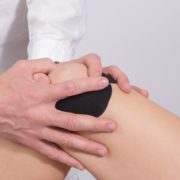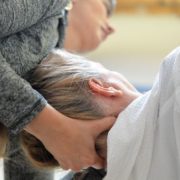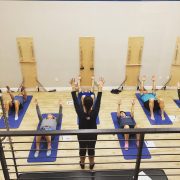Could your Knee Pain be Caused by your Lower Back?
Is your knee pain actually due to a problem in your knee – or could it be caused by your lower back?
One of the most important things to get right when it comes to successfully resolving knee pain is to correctly identify the source. And often times that source can be your lower back.
One of the biggest clues that you’ve missed the root source of your knee pain is that it doesn’t go away after trying everything that “should” help it. Perhaps you’ve tried ice, heat, pain medication, foam rolling, strengthening, and stretching… but no matter what, your knee pain just won’t seem to go away. This is often when knee doctors start to get involved, which is great if you actually have a knee problem. Knee pain that doesn’t respond to conservative treatment should be looked at further. It’s possible that you might need some kind of procedure or surgical intervention.
But what if your knee pain is a symptom of something else?
If so, and you don’t get it properly checked, then you risk having unnecessary knee surgery.
I just spoke to someone who this happened to. She had knee surgery to “clean out” some wear and tear from arthritis after trying several months of physical therapy. She was told it would be a “quick recovery” and that her pain would be significantly reduced. Well, three months later, her knee is feeling worse than pre-surgery. And to fix the NEW pain she has, they tell her she will need even more surgery! She came to us for a second opinion, and the very first thing we did was screen her lower back to see if it might be the cause of her knee pain. Turns out it was! This woman’s knee pain was never actually coming from her knee, and she ended up having unnecessary surgery because the root cause – her lower back – was missed.
How does a misdiagnosis like this even happen?
One of the biggest culprits is imaging. If you’re over age 40, and you get an X-ray or MRI taken of your knees, there is a 60-80% chance they’ll find arthritis or meniscus (cartilage) tears. Studies have shown that arthritic changes and meniscus tears are a normal part of aging, so they will show up on your images even if you don’t have any knee pain. This is why you should never dictate your treatment plan, and certainly not surgery, based on an MRI or X-ray alone.
Here are a few clues to help you figure out if your knee pain could be coming from your back.
First, pay attention to how and when your knee pain started. If you’ve had a fall or some kind of trauma to your knee, and you experience knee pain or swelling shortly after, then odds are very good you have an isolated knee problem. With isolated knee injuries, you often know exactly when and how you hurt your knee. It may have been associated with a pop or specific strain of some kind. But if your knee pain comes on slowly or out of nowhere, then you must consider that the source of the problem could be elsewhere.
Another clue is how your pain behaves. When your lower back is the source, often you’ll have difficulty pinpointing exactly where your knee pain is. It may feel dull or even numb. It might move around, or perhaps travel up or down your leg. One day your knee will feel great, and other days it could feel excruciating. When someone comes into our office with pain like this, we ALWAYS check their lower back first. Knee pain that moves around a lot, or that comes and goes frequently, can quite often be due to a back problem.
If you’ve been suffering from knee pain for awhile, it’s worth considering that the root source of your problem could be your lower back.
Before you think about getting images of your knee, or undergoing some kind of surgery or procedure, you’ll want to make certain that your knee problem is indeed a knee problem.
Dr. Carrie Jose, Physical Therapist and Pilates expert, owns CJ Physical Therapy & Pilates in Portsmouth, NH. To get a free copy of her free guide: 7 Ways to Stop Knee Pain – click here.









